Protest Dance Outside Kennedy Center Targets Trump’s Attack on Culture
Dozens of workers have been terminated since the president took over the institution in February.
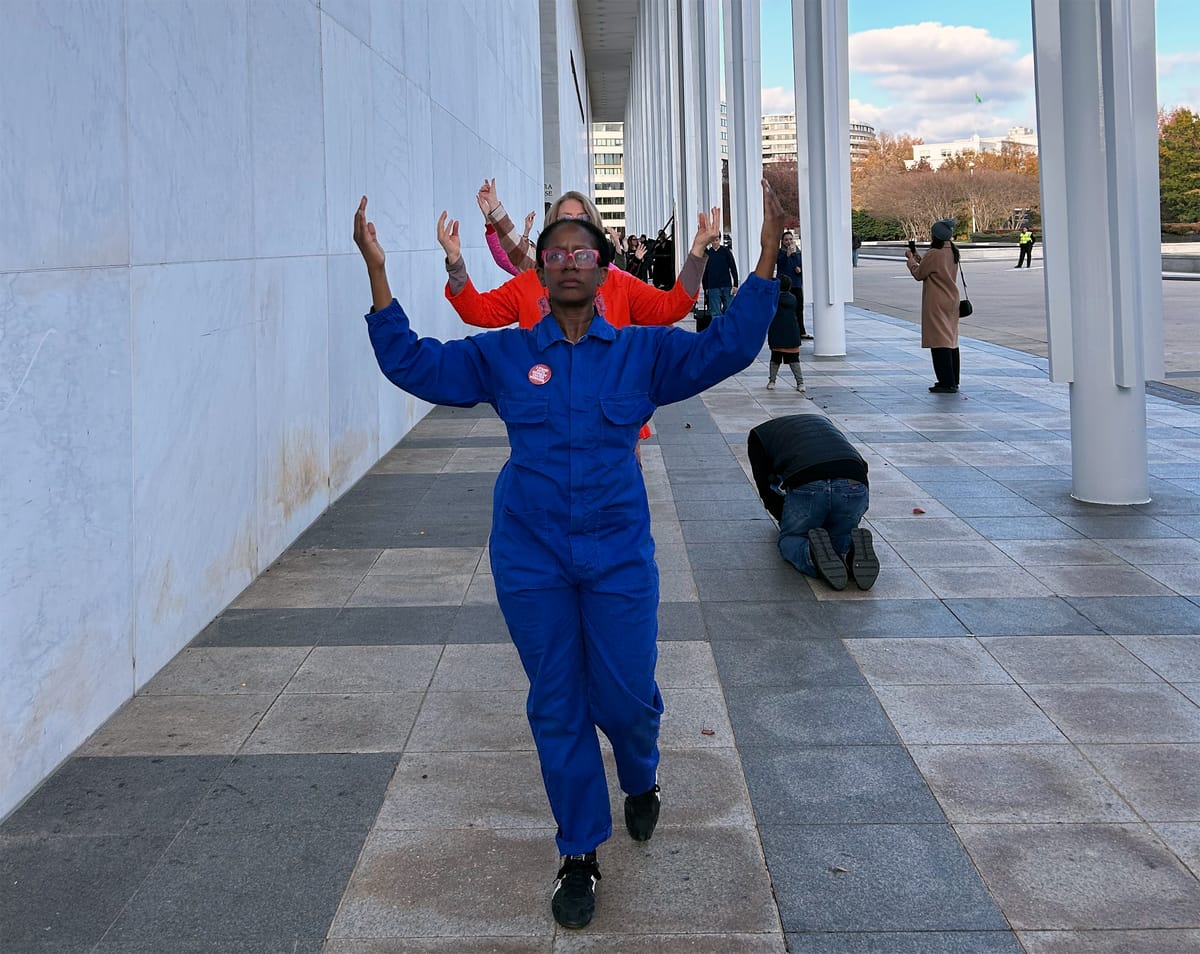
WASHINGTON, DC — On Saturday, November 22, protestors expanded and crunched their bodies, arms rising and falling with flicked wrists, as they marched in front of the Kennedy Center with stoic expressions. Passersby would be excused for mistaking it for an official performance, but the show outside the nation’s art center was actually a “dance protest” organized in response to President Trump’s rising authoritarianism.
While DC was buzzing with action across the city at the Remove the Regime march and fold-in event at the Lincoln Memorial, the Kennedy Center offered a powerful backdrop for resistance. Days before, the US Senate Committee on Environment and Public Works launched an investigation into cronyism and corruption at the Kennedy Center under the leadership of Richard Grenell, whom Trump appointed as the institution’s interim president in February.
Since Grenell took over, dozens of Kennedy Center staff, including the entire dance programming team, have been fired; diverse programming has been cancelled; and despite its reputation as a leading center for accessible art, staff were banned from wearing masks.
“When you think of censorship, Jimmy Kimmel is the person, but the Kennedy Center is the place,” said one organizer with Hands Off the Arts, who asked to remain anonymous, in an interview with Hyperallergic.

On Saturday at 1:30 pm, union leaders, former staff, and Kelly King, founder and CEO of the Movement Movement, gathered across from the Kennedy Center’s northern steps to learn the moves to the Nelken-Line by the late choreographer Pina Bausch. The dance protest was organized as part of Fall of Freedom, a nationwide call to action.
“When we dance together today, we make our circle, or today our line, clear and known," Jane Raleigh, former director of dance programming at the Kennedy Center, said during the opening remarks. “We show the strength we have in numbers, and we make our power undeniable in this fight to protect the arts.”
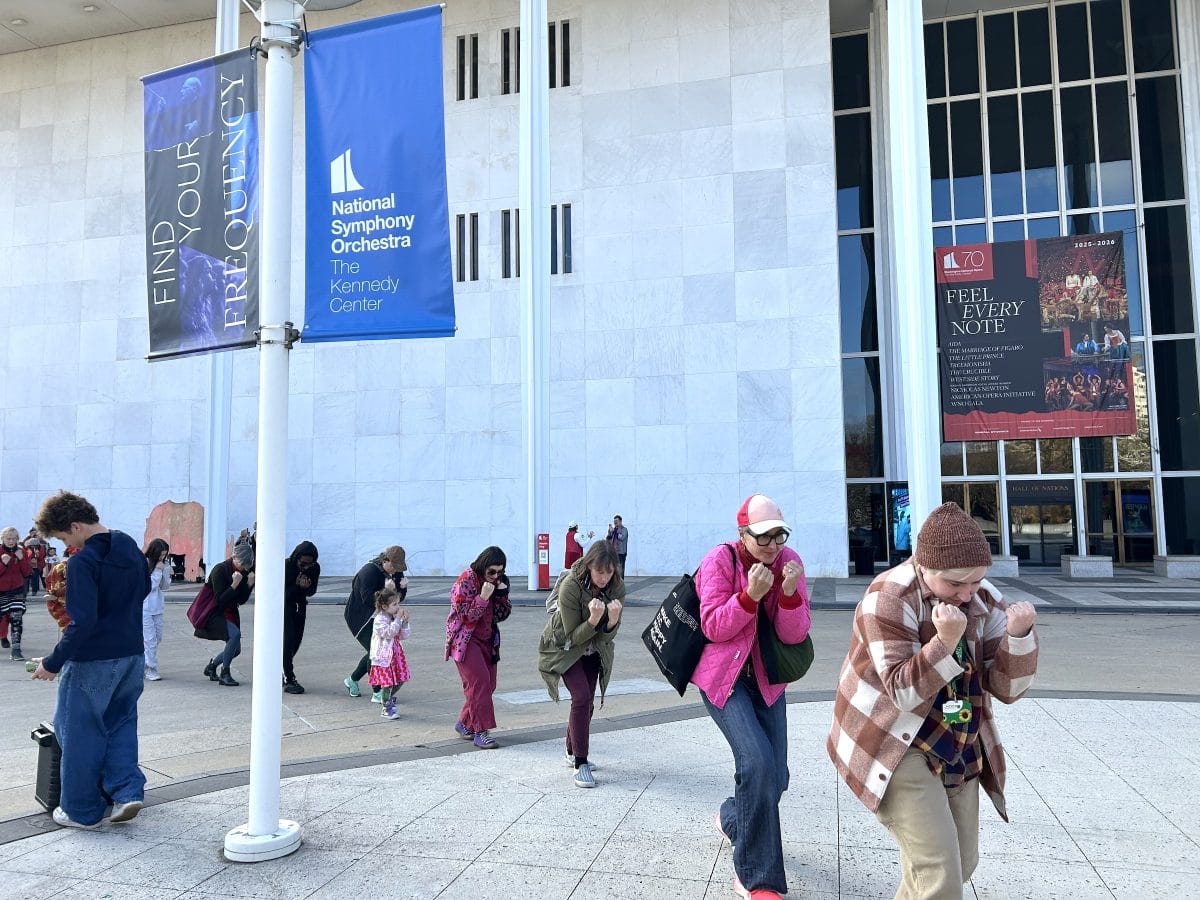
“We call for the immediate dismissal of Richard Grenell from his role as the president of the Kennedy Center,” added her former colleague, Mallory Miller, a performer and dance curator who was fired from the Kennedy Center in August.
She now works as an organizer with Hands Off the Arts, a coalition of artists, arts workers, patrons, unionists, LGBTQIA+ activists, and free speech advocates fighting to preserve the arts from government censorship and erasure.
“We demand the reinstatement of dance programming and all other worker leaders fired in the Center’s attempt at union busting,” Miller continued. “We demand the immediate recognition of the Kennedy Center United Arts Workers Union just as they petitioned for it in May, and we demand the repeal of the onerous anti-mask policy currently imposed on Kennedy Center workers.”
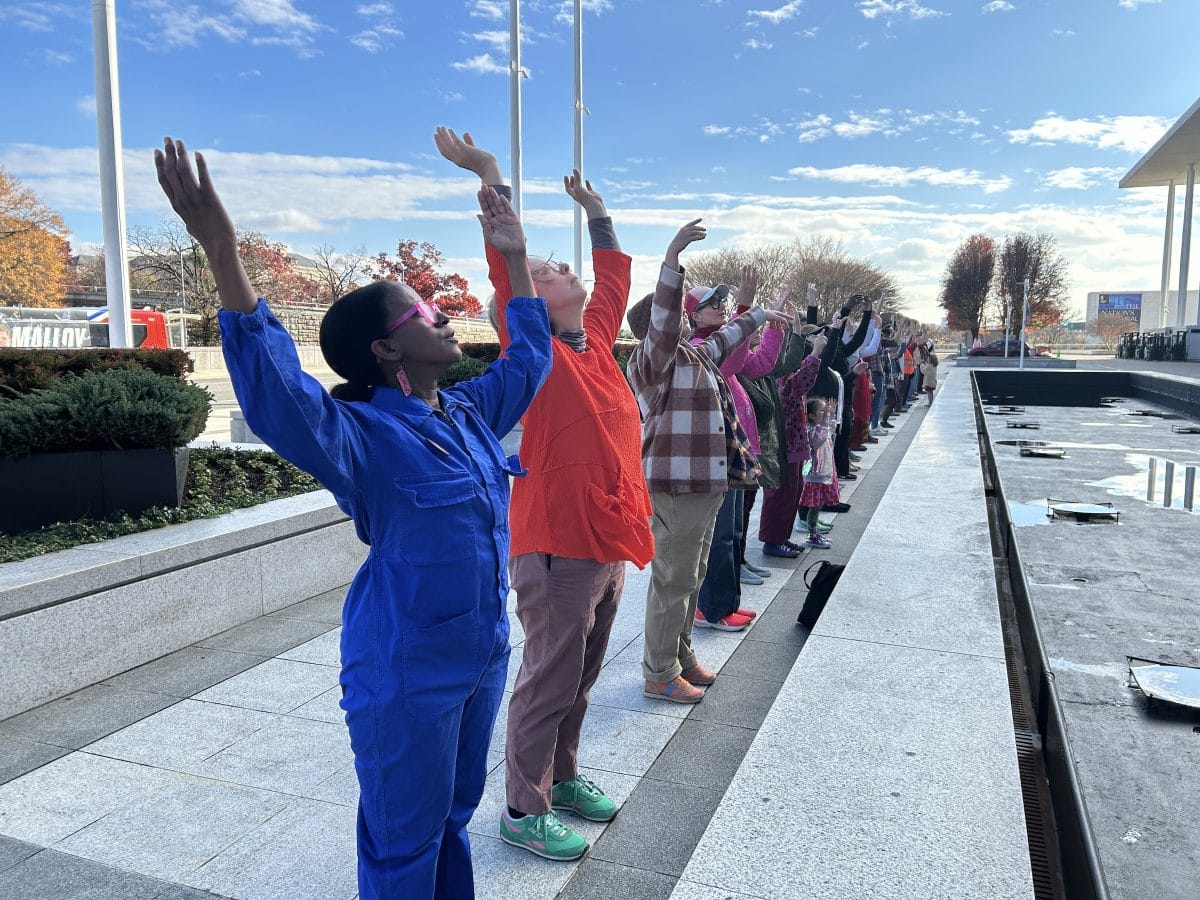

To cheers of support and shouts of “shame!” aimed at the Center’s pristine white walls, supporters began dancing up the steps and in front of the main entrance, twisting their arms as rising trees and cupping their hands like falling leaves to the music from King’s portable speakers.
Fittingly, the Nelken-Line is rooted in the turning of the seasons, a symbolic promise of change.
They were not alone. Rolling into the opening remarks and alongside the dancers, a massive two-dimensional rhinoceros served as a meaningful if perhaps anachronistic icon. IceBox Collective’s La Casa de Benito is an electric two-dimensional rhino inspired by Albrecht Dürer’s 1515 woodcut and Eugène Ionesco’s 1959 play about fascism and conformity, in which townspeople inexplicably turn into rhinos.
The collective fitted the originally stagnant rhino from the 2025 Foggy Bottom Biennial with wheels to bring it to protests just like the one this past Saturday.
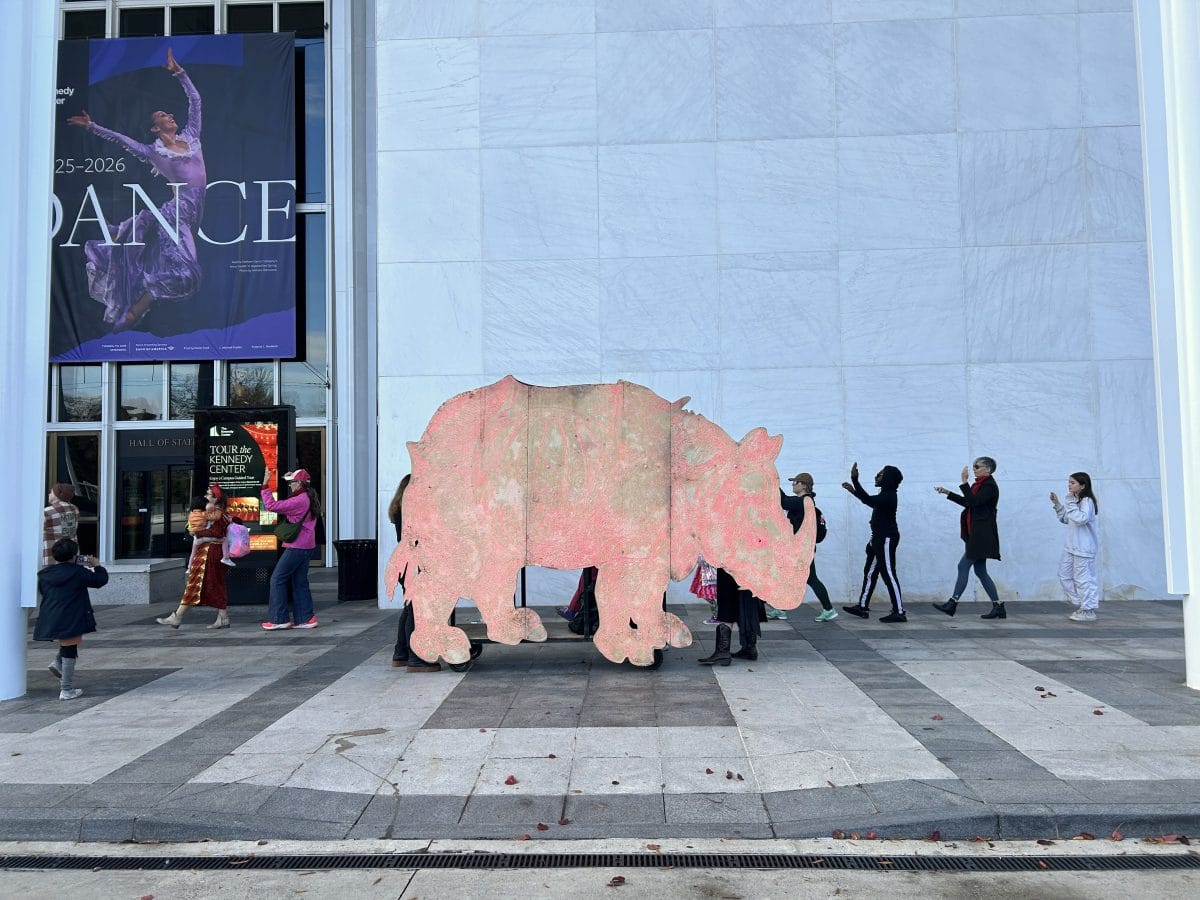
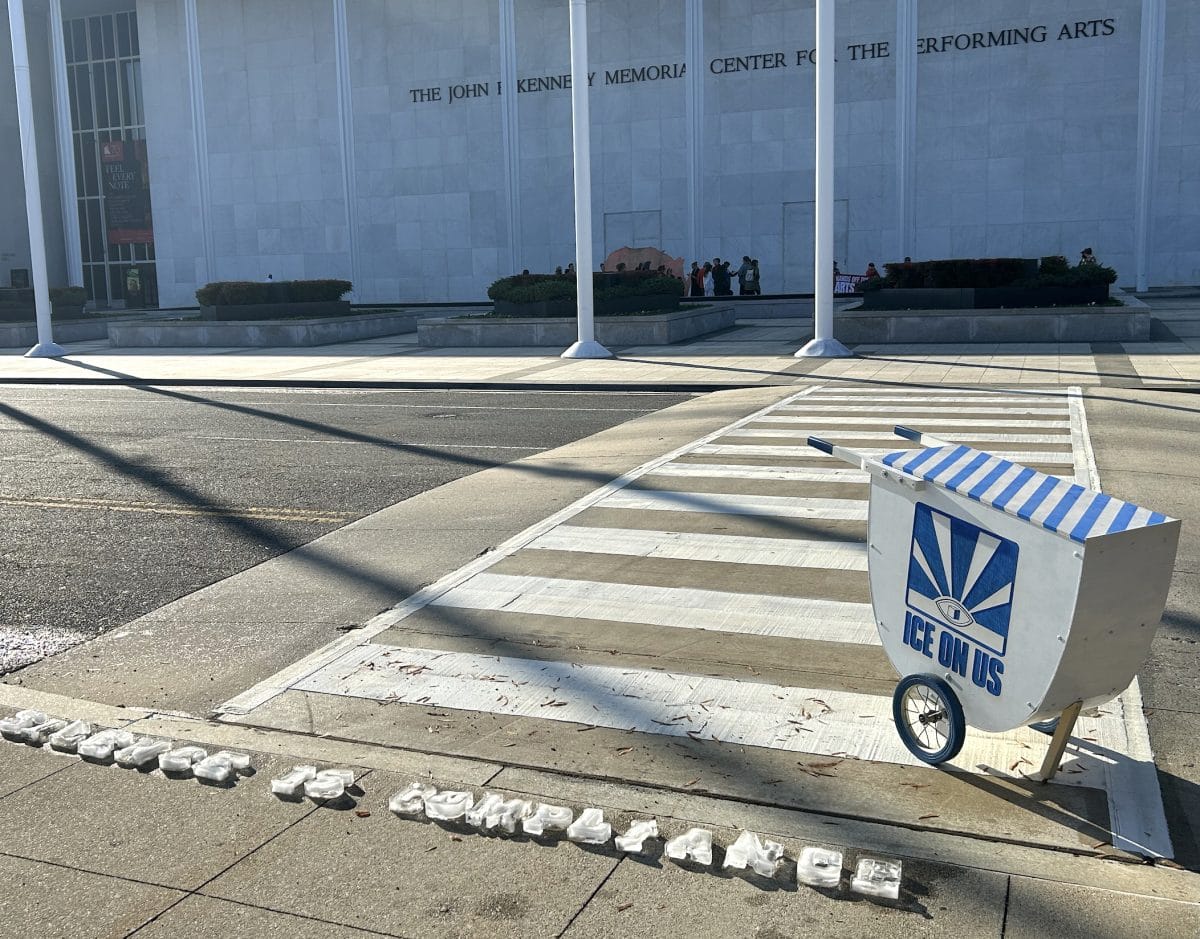
Additionally, after the dancing concluded and a group photo was taken, a social action class from George Mason University unveiled its final project — the words “silence is compliance” made of ice on the crosswalk in front of the Kennedy Center, along with a cart labeled “ICE ON US.” The words slowly melted into the street as the dancers gathered, looking back at the institution before dissipating.





